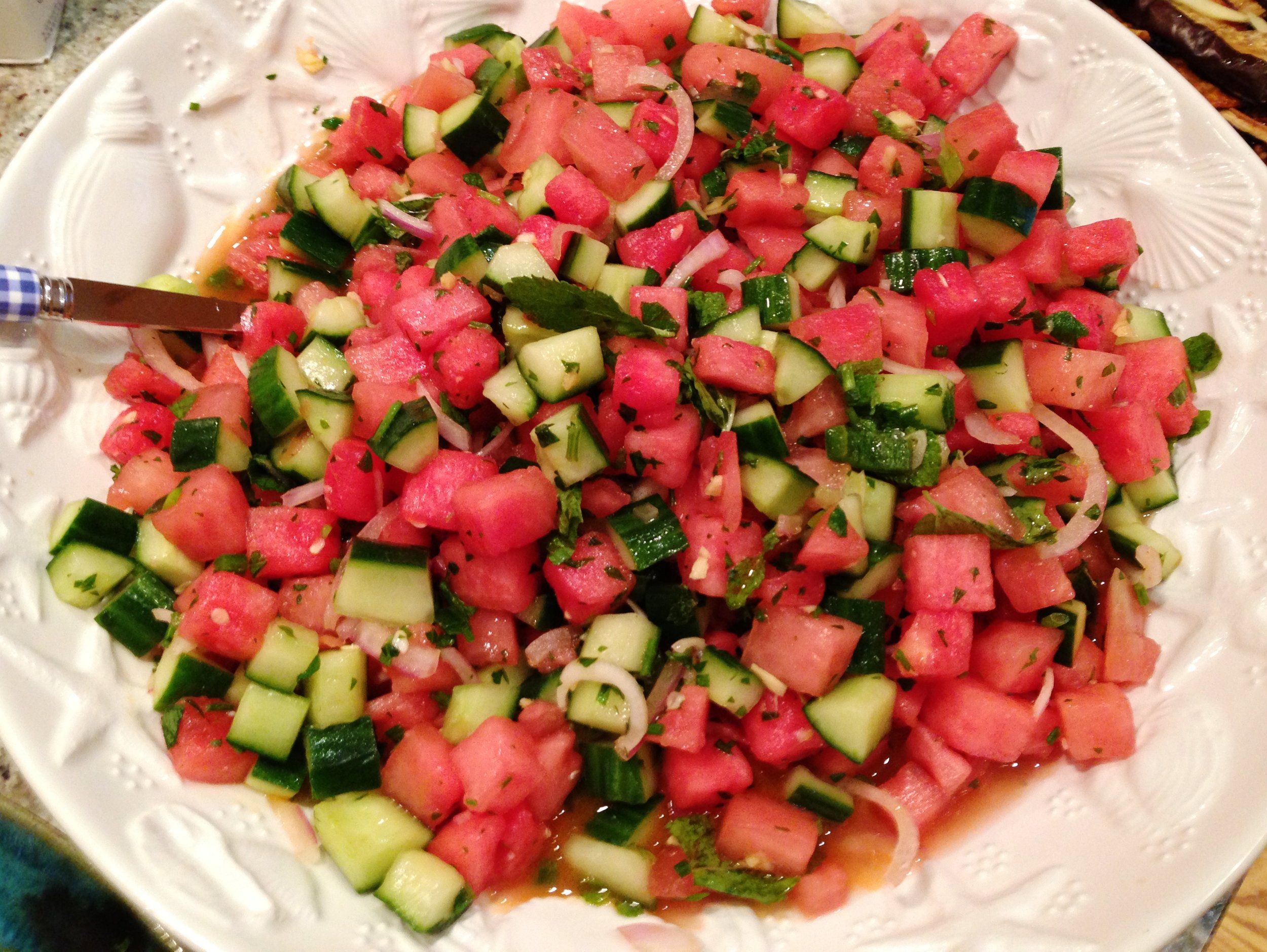FOOD PORN: A LOOK BACK 2015 (Catering Edition)
Here we are in 2016 (can you believe it?!), and once again, the final month of the year proved to be a happily hectic one for Blu Aubergine. I managed to keep up to some degree with blogging, but never as much as I'd like.
So here, now, I thought I'd start the new year off with something different than what's currently clogging your inbox. I'll hold off on the healthy eating and new year resolution diets and soup recipes (though those are coming!) to reflect on some of the more drool-worthy creations I served to my clients over the past year. This is a multi-part posting under the Blu Aubergine blog category FOOD PORN that I started last year. It's simply photos of the more popular and pretty dishes I made in 2015 -- trolling for culinary salivary stimulation. Yes, I'm still unapologetic.
Oven-roasted heirloom cherry tomatoes atop herb-crusted goat cheese: one of many varieties of crostini in our catering repertoire.
Scallop ceviche: spicy, fresh, and light, served with crispy tortilla chips.
A modern version of Oysters Rockefeller...
Home-cured salmon and goat cheese with red onion on baguette crisps: more crostini!
Roasted red pepper soup with parmigiano croutons -- Cheese and salumi platter
Crostini topped with London broil and chimichurri; Crostini with ricotta and prosciutto, artichoke spread, and tomato and basil.
We catered a lovely baby shower luncheon, with a Peter Rabbit theme -- perfect for an early springtime afternoon with the ladies.
Baby carrot cakes were on-theme and the perfect bite for those with a sweet tooth.
And mini strawberry-rhubarb pies were an indulgence that most party-goers couldn't resist!
We catered the seemingly impossible: a Passover Seder and surprise birthday party for 30 people in a small, newly renovated, unoccupied apartment (with a kitchen that was installed just hours before the event!)
The seder had influences both classic Ashkenazi (brisket) and Mediterranean (Italian rosemary and garlic-stuffed turkey breast in a white wine sauce)...
...as well as Sephardic sides like fattoush made with matzoh instead of pita bread, and Moroccan-spiced potato salad with green olives, preserved lemon, and sumac...
...Plus desserts that included my famous flourless chocolate cake with fresh strawberry sauce, flourless apple tart, and biscotti and macarons.
It was also a great year for Blu Aubergine and fun pop-ups. We worked with No Satar/Air Circulation Studios to create a friendly, relaxed Roman Easter-themed feast!
Platters of Rigatoni all'amatriciana
Risotto with asparagus, parmigiano, and crispy prosciutto
And classic saltimbocca alla romana were among the offerings...
Penthouse birthday bash on the Bowery for 75 people.
My culinary contribution to my parents' 50th wedding anniversary party in a south Florida restaurant: the cake!
I decided on a family favorite, called a shadow cake: 4 layers of chocolate and golden cakes with chocolate buttercream, topped with white buttercream and chocolate ganache to cover (and a golden heart on top, for the 50th golden anniversary, of course!).
Another amazing pop-up I did was in conjunction with Filigree Suppers, and the theme was famous women in culture. Each course was inspired by a fabulous female, from Dorothy Parker to Josephine Baker, Georgia O'Keeffe to Julia Child, Chanel to Pavlova. It was a wonderful evening!
Southwestern sunset-hued salads, in celebration of Georgia O'Keeffee
Deconstructed Boeuf Bourguignon, in honor of Julia Child.
And a seared scallop on squid ink couscous, with pickled cauliflower and preserved lemon sauce, in salute to Josephine Baker.
A sweet ending: Pavlovas, the meringue, cream, and fruit dessert created in honor of the ballerina.
Holiday season highlights included a southern-themed holiday dinner party in a 30,000 square foot artist's studio on the Brooklyn waterfront...
The table was gorgeous and the food, including creole shrimp, sweet potato casserole with caramelized onions and goat cheese, roasted pork loin with peach-cranberry mostarda, and cajun brussels sprouts and cabbage slaw, exuded southern charm.
There were other holiday parties, of course: cocktail gatherings downtown and uptown...with brie en croute, drizzled honey, nuts and dried fruit, smoked salmon with horseradish cream on endive leaves...
The sweet ending to the year? Mini sweet potato cupcakes with maple buttercream...
Red fruit tart with mascarpone-ginger cream...whole...
And in slices, with a spiced citrus sauce....
And a yule log, of course, to end the year on a festive holiday note!
Posted by Dana Klitzberg at Thursday, January 14, 2016




















































































































